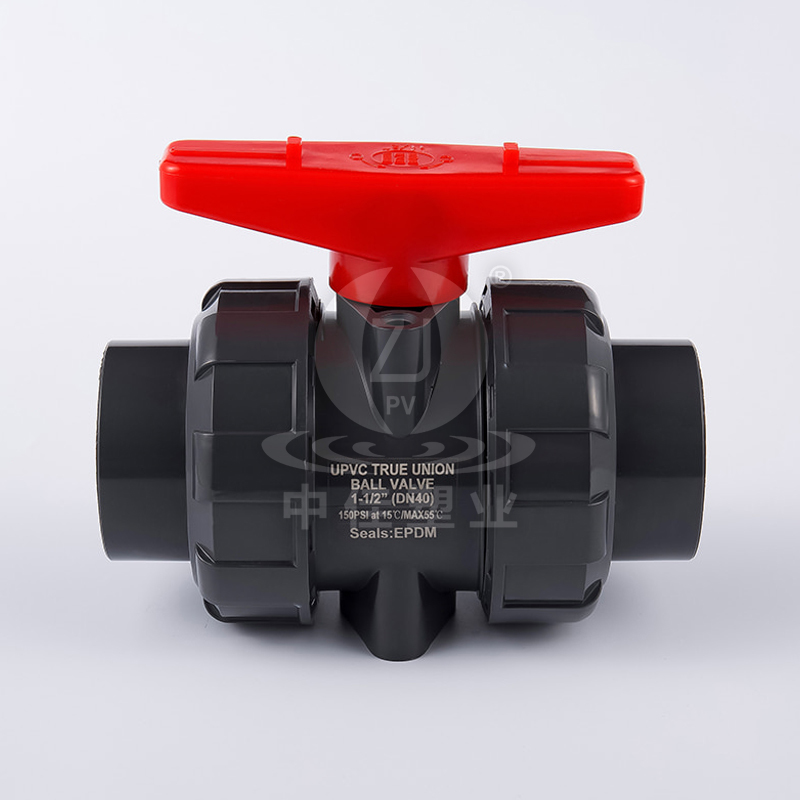

In the intricate world of fluid control systems, UPVC ball valves stand as a testament to how affordability and reliability can coexist harmoniously. By combining cost-effective materials with robust engineering, these valves continue to redefine how we approach efficiency, safety, and sustainability in plumbing and industrial applications. From enhancing everyday convenience to supporting large-scale infrastructure projects, UPVC ball valves exemplify the perfect blend of practicality and innovation.
Honoring Practicality with Unmatched Durability
At the heart of UPVC ball valves’ appeal is their unmatched durability, which ensures consistent performance in a wide range of environments. The unplasticized nature of UPVC gives it superior strength and rigidity compared to other plastic materials, making it resistant to cracking, warping, and deformation under pressure.

For example, in agricultural irrigation systems, UPVC ball valves play a vital role in regulating water flow to crops. Their ability to withstand prolonged exposure to sunlight, moisture, and soil chemicals ensures that farmers can rely on them season after season. Similarly, in wastewater management, these valves are used to control the flow of effluents and sludge, providing a leak-proof and low-maintenance solution for challenging environments.
Even in household plumbing, UPVC ball valves demonstrate their value through applications like shut-off valves, backflow preventers, and drain systems. Their smooth interior surfaces minimize friction and scaling, ensuring optimal water flow and reducing the risk of blockages. This functionality makes UPVC ball valves an invaluable tool in maintaining efficient and hygienic plumbing systems.
Supporting Sustainable and Functional Design
Beyond their durability, UPVC ball valves excel in supporting sustainable and functional design. As industries increasingly prioritize eco-friendly practices, UPVC emerges as a material that aligns with global efforts to reduce environmental impact. Its recyclability ensures that old valves can be repurposed or reused, contributing to circular economy initiatives.
Functionality is another area where UPVC ball valves shine. In industrial settings, these valves are used to manage the flow of chemicals, gases, and liquids in pipelines, ensuring precise control and minimal leakage. Their compatibility with automated systems—such as pneumatic or electric actuators—enhances operational efficiency, allowing for remote monitoring and control of fluid systems.
The ease of maintenance associated with UPVC ball valves further enhances their practicality. Unlike metal valves that require periodic lubrication or replacement due to corrosion, UPVC valves remain virtually maintenance-free throughout their lifespan. This convenience makes them an attractive choice for businesses and homeowners seeking reliable solutions without the hassle of frequent upkeep.
Bridging Tradition and Innovation
The evolution of UPVC ball valves highlights the intersection of tradition and innovation in fluid control systems. While their roots lie in decades-old polymer chemistry, modern technologies have enhanced their capabilities. For instance, multi-port designs and modular configurations allow manufacturers to create valves tailored to specific applications, improving versatility and performance.
Smart coatings and additives are another frontier where UPVC ball valves are making strides. Anti-fouling treatments, UV stabilizers, and antimicrobial agents expand their functionality, making them suitable for demanding applications in healthcare, food processing, and outdoor environments. These innovations demonstrate how traditional components can evolve to meet the demands of a tech-driven world.
Versatility Across Industries
The versatility of UPVC ball valves is one of their greatest strengths. They can be applied to virtually any industry requiring precise, repeatable results. In defense and military applications, they produce lightweight yet durable components for drones, satellites, and armored vehicles. In consumer electronics, they enable the mass production of sleek, compact devices that meet stringent design requirements.
Even in emerging fields like additive manufacturing, UPVC ball valves complement 3D printing by providing a reliable method for post-processing printed parts. This synergy ensures that components meet dimensional accuracy and surface finish standards, bridging the gap between prototyping and full-scale production.